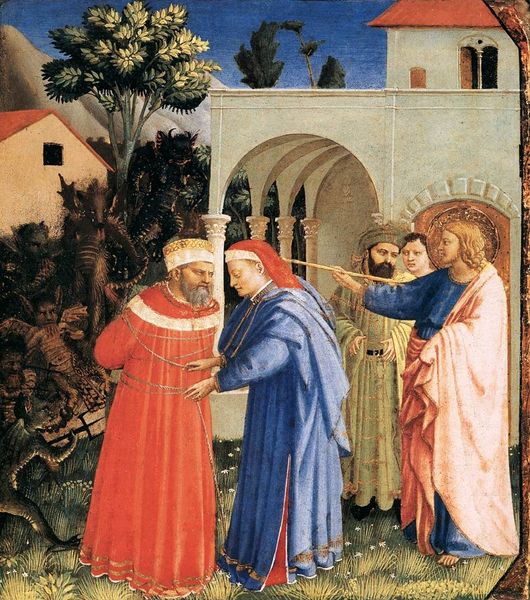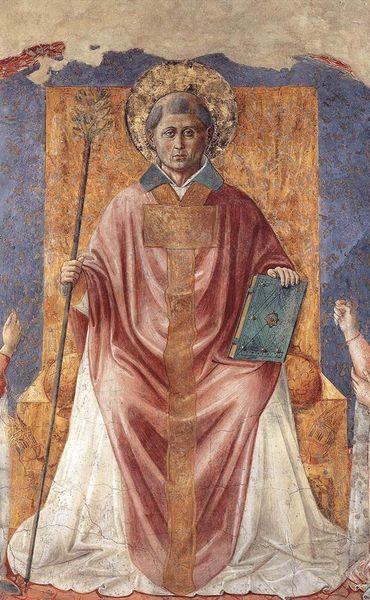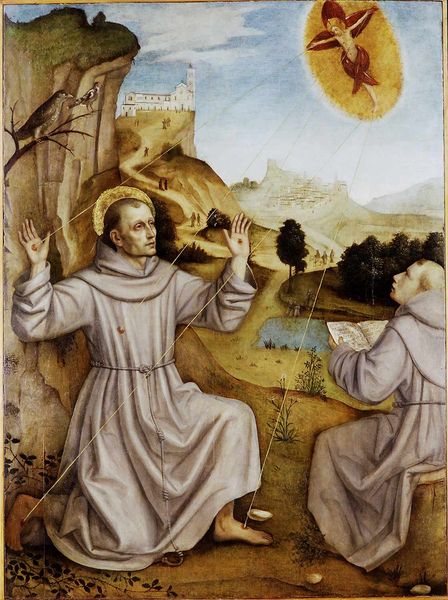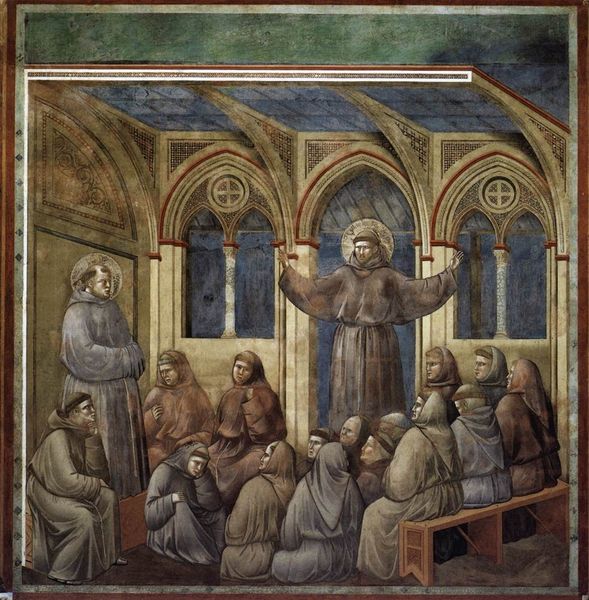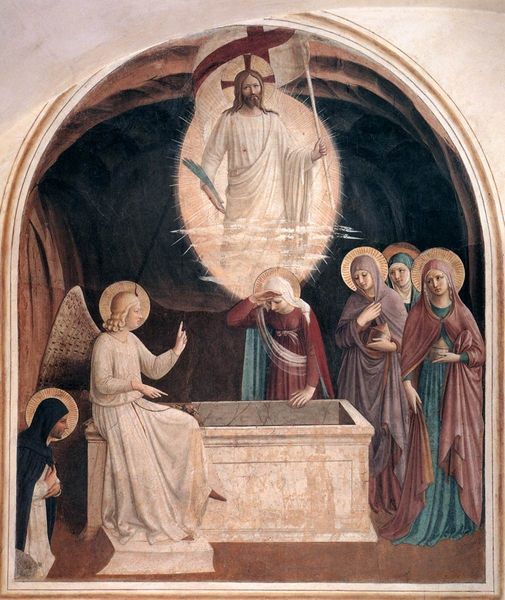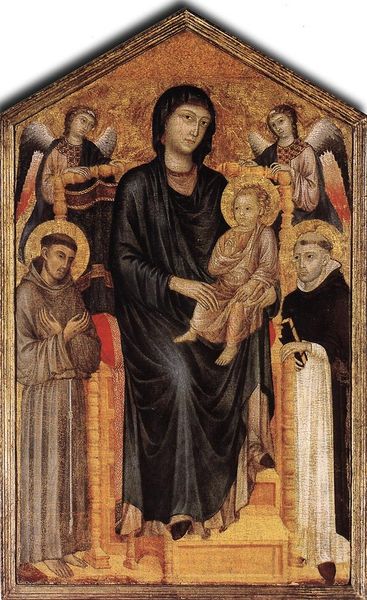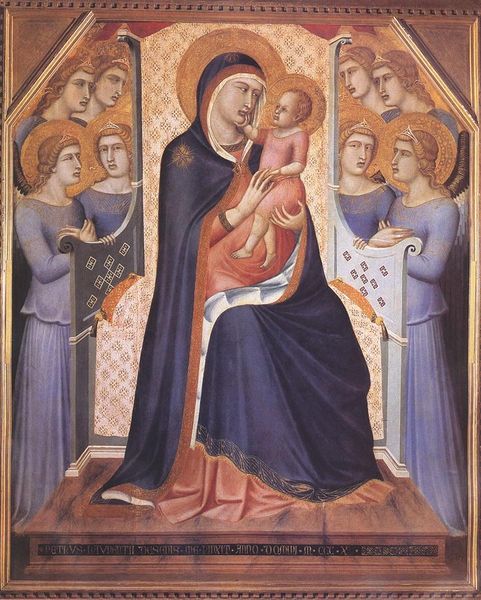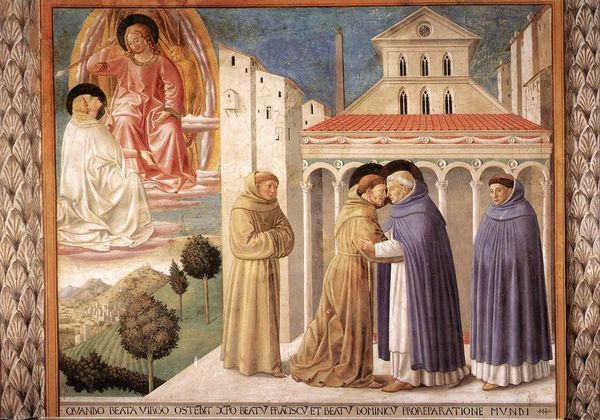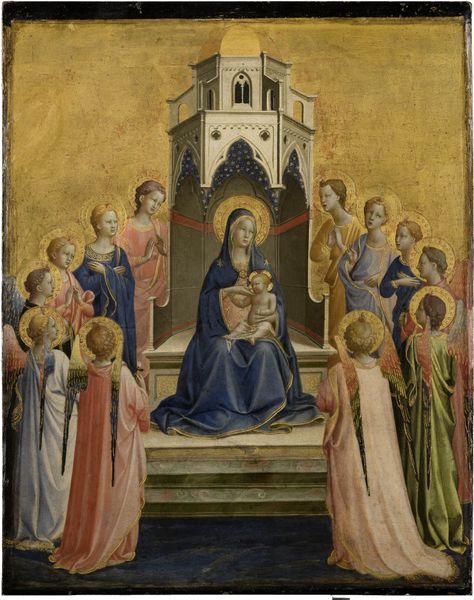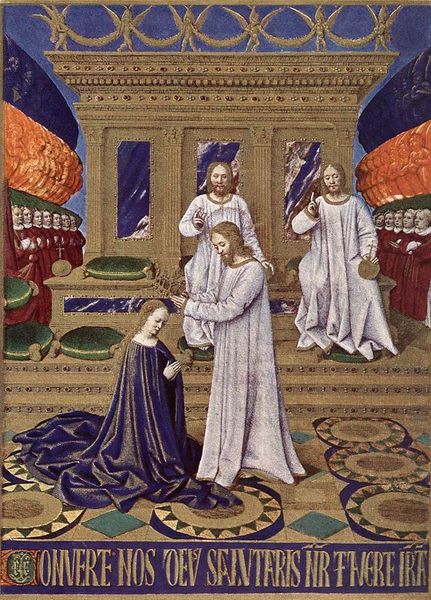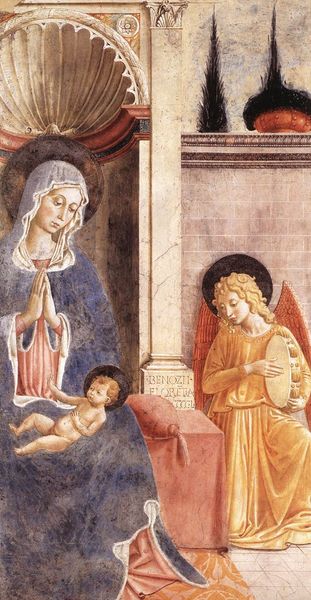
tempera, painting, textile, fresco
#
portrait
#
gouache
#
water colours
#
narrative-art
#
tempera
#
painting
#
textile
#
holy-places
#
figuration
#
text
#
fresco
#
handmade artwork painting
#
oil painting
#
underpainting
#
christianity
#
painting painterly
#
history-painting
#
academic-art
#
italian-renaissance
#
watercolor
Copyright: Public domain
Benozzo Gozzoli made this fresco of St. Anthony of Padua using pigments applied to a freshly plastered wall. The process of fresco painting demands careful planning and swift execution, as the colors bind to the plaster as it dries, creating a durable image. Gozzoli's skill is evident in the fine details and vibrant colors, achieved through grinding and mixing pigments, a labor-intensive craft in itself. Notice the lapis lazuli, used to create the deep blue sky populated with stars, which was a precious material at the time, often imported from distant lands, a symbol of wealth. The creation of frescos like this was also a highly collaborative enterprise, involving not just the master artist but assistants who prepared the walls, mixed pigments, and helped with the painting itself. Looking at the finished work, it’s easy to forget the layers of labor and material sourcing that went into its making. Remembering this helps us see beyond the image, acknowledging the social and economic context in which it was created.
Comments
No comments
Be the first to comment and join the conversation on the ultimate creative platform.

